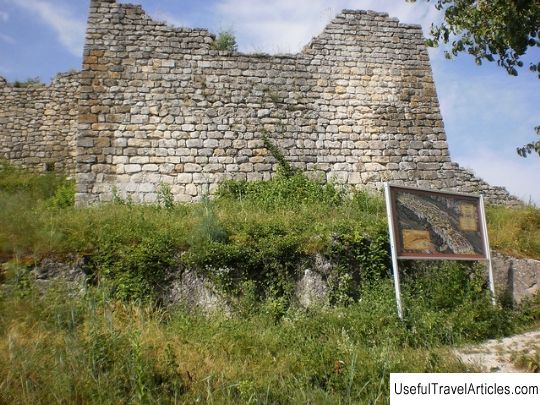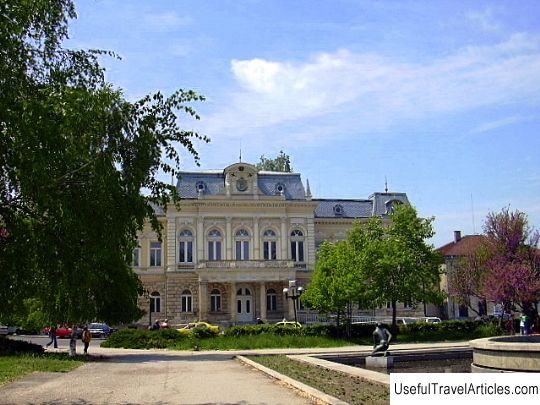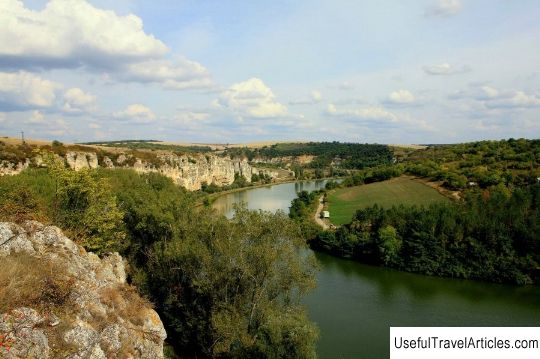Fortress Cherven description and photos - Bulgaria: Ruse

Cherven Fortress description and photos - Bulgaria: Ruse. Detailed information about the attraction. Description, photos and a map showing the nearest significant objects. Photo and descriptionMedieval fortification Cherven (translated from Bulgarian - "red") - one of the most impressive military, administrative, economic, religious and cultural centers of the Second Bulgarian State (XII-XIV centuries) ... The ruins of the fortress are located in the village of Cherven, which is 35 kilometers south of Ruse. The Cherven fortress was built on the remains of another fortress of the early Byzantine period (6th century), but it is known that this territory was developed by people back in the Thracian era. The importance of the fortification increased after 1235, when it became the center of the diocese. The fortress was destroyed after the Tatar invasion of 1242, and later passed into the hands of the Byzantine conquerors during the reign of King Ivaylo (1278-1280). The second half of the XIV century was marked by the prosperity of the fortress: it grows to an area of 1 sq. Km, on which farm buildings and residential buildings are located. The fortress during this period consisted of an inner city on the banks of the Cherni Lom River, and an outer city at the foot of the rocks. In addition, the city is surrounded by a complex system of additional stone fortifications. In the same century, Cherven became a craft center, iron mining and its processing came to the fore, and construction, art and other crafts were not in the last place. Thanks to its convenient location, the fortified city becomes an important center of trade, as it lies in the path of those who follow the Danube. The fortress was captured and destroyed by the Ottoman Empire in 1388. After the transition to the rule of the Turks, the fortress is gradually losing its authority, although for some time it remains an administrative center. The first excavations on the site in the area of the Cherven fortress were organized in 1910-1911, and by 1961 during regular excavations the following was discovered: a large feudal castle, two underground drains, fortress walls, 13 churches, public buildings, houses, streets. A part of the fortress has also been completely preserved - a three-story tower built in the XIV century. All finds are kept in the National Historical, National Archaeological Museums of Sofia, and some of the finds are sent to the Regional Historical Museum of Ruse. The Cherven Fortress has been an archaeological reserve of national importance since 1965. The first excavations on the terrain in the area of the Cherven fortress were organized in 1910-1911, and by 1961, during regular excavations, a large feudal castle, two underground drains, fortress walls, 13 churches, public buildings, houses, streets were discovered. A part of the fortress has also been completely preserved - a three-story tower built in the XIV century. All finds are kept in the National Historical, National Archaeological Museums of Sofia, and some of the finds are sent to the Regional Historical Museum of Ruse.The Cherven Fortress has been an archaeological reserve of national importance since 1965. The first excavations in the area in the area of the Cherven fortress were organized in 1910-1911, and by 1961 during regular excavations they discovered: a large feudal castle, two underground drains, fortress walls, 13 churches, public buildings, houses, streets. A part of the fortress has also been completely preserved - a three-story tower built in the XIV century. All finds are kept in the National Historical, National Archaeological Museums of Sofia, and some of the finds are sent to the Regional Historical Museum of Ruse.The Cherven Fortress has been an archaeological reserve of national importance since 1965. public buildings, houses, streets. A part of the fortress has also been completely preserved - a three-story tower built in the XIV century. All finds are kept in the National Historical, National Archaeological Museums of Sofia, and some of the finds are sent to the Regional Historical Museum of Ruse.The Cherven Fortress has been an archaeological reserve of national importance since 1965. public buildings, houses, streets. A part of the fortress has also been completely preserved - a three-story tower built in the XIV century. All finds are kept in the National Historical, National Archaeological Museums of Sofia, and some of the finds are sent to the Regional Historical Museum of Ruse.The Cherven Fortress has been an archaeological reserve of national importance since 1965.     We also recommend reading Gdovskaya fortress description and photo - Russia - North-West: Pskov region Topic: Fortress Cherven description and photos - Bulgaria: Ruse. |




